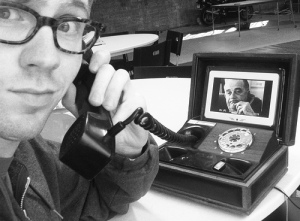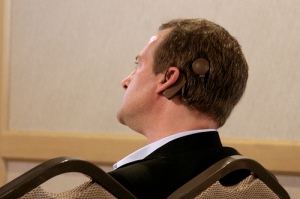Co – Contributor: Taylor S.
Stress awareness
When you google how to deal with stress, everything will say the same things. They say breathe, meditate, exercise, eat healthy, ect. However, what if your stress is money, time, or your relationship. How is meditating, or eating healthy, or breathing supposed to help with those stresses. Some of those things could even add to your stress. What if you don’t have time to exercise, or the money to eat healthier? How is meditating going to help with your relationship? This isn’t your average article about stress. Here we are going to discuss three different topics of stress and how to try to manage those stressors.
Almost everyone I have ever talked to stresses about money. With increased gas prices and inflation on pretty much everything, money is a huge stressor. How do you start to manage your money stress? The biggest thing is to redo your budget. I started saving over $500 a month just by redoing my budget. You would be surprised how many of us have memberships or subscriptions that we don’t even use or have completely forgotten about. There are many of us that eat so much because delivery is so convenient nowadays. The easiest way to start redoing your budget is to go through your bank account for the last 90 days. Write down all recurring charges to your account and look up what they are for. If it is a subscription that you forgot about or something you don’t use anymore, cancel it. That gym membership you have not used in four months, or that streaming service you started paying for so you could watch that one show, cancel them. You don’t need them. I just did this myself last month and started saving $300 just by canceling unused memberships. The next thing you do is, go through your bank account for the last 30 days. Write down all the charges you have for takeout or restaurants. You will be surprised how much you actually spend in just door dash or uber eats orders alone. I realized I was spending over $800 a month in food. For just two people! I was completely flabbergasted when I saw that amount. Now I know not everyone wants to cook every night or for lunch everyday. However, you will be amazed by how much you could save by only eating out once or twice a week. You don’t have to cut out door dash or uber eats completely. Just maybe don’t order it for every meal, every day. Doing those two tasks will help you save so much a month and will lower your stress when it comes to money.
Everyone always says there aren’t enough hours in the day. Sometimes it may feel like this when you have a busy schedule. Time management can be very stressful for a lot of people. How to reduce this stress? Make a schedule. But don’t just make the schedule, actually stick to it. Make a schedule for your day. Plan out how much time you are willing to spend on each task that is needed to be done for that day. Now don’t just wake up and make your schedule for that day. Sit down the night before and plan out what needs to be done. You want to do this the night before so you will know what time you need to go to sleep and what time you will need to wake up. Sticking to a schedule will give you a visual on what you actually have time for and what can wait til later. Once you make your schedule, do not add to it. Did friends or family ask for your help with something that’s not already in your planned schedule for that day? Learn to say no. Now, I know we all want to help our friends and family. However, it is okay to tell someone that you do not have the time. Don’t be afraid to make your own life and daily activities a priority. Keeping a schedule and not adding more to it will help reduce your time management stresses.
After talking with quite a few people, I found that another big stressor in life is relationship stress. Couples who have been together for 10 or 20 plus years still stress over their relationship. It is very common. Now, did I read this online somewhere? Absolutely not. I asked real people in very real relationships. New couples, long term couples, engaged couples, married couples. It is the same thing across the board no matter what stage you are in. Am I doing my part, is my partner happy, does my partner feel seen and respected? These are questions that people ask themselves throughout their entire relationship. How do we deal with these stresses? This is actually a very simple answer. Keep doing the little things. Don’t spend the whole day stressing over your relationship. Instead spend the day doing something small for you, your partner, or both of yall as a couple. You would be surprised how the little things can make a big impact. Maybe you and your partner are hanging out with friends outside on a cool night. You know that your partner only drinks water. Next time you go over to the cooler to get yourself a drink, maybe take that bottle of water that’s underneath all the ice and put it on top. Your partner will talk about that one small gesture for days. They will have felt seen and know that you thought about them. Is your house a mess after a long week and you have a day off? Clean the house. Your partner will come home and know that you thought of them and did something so that they didn’t have to after a long day at work. They will know that you respect everything they do by not adding something else for them to do. Now let’s say that you are stressing over feeling like you and your partner are not spending enough time together. Does that mean that you have to plan a fancy date night to add to your money stresses previously mentioned? No! Do something small. Plan an evening in. Maybe yall cook dinner together instead of only one person doing it. Watch that show that yall have been wanting to watch, or watch that episode of that show you missed from last week. Again, it doesn’t have to be big. Continuing to do those little things will help reduce the stress of “am I doing enough”.
Let’s take a beat and talk about how these stresses can impact your life and your mental health. If you are someone like me, when you get stressed you get very anxious. Not dealing with those stresses head on will make that anxiety grow until you feel that it is impacting your motivation to get things done. We all get overwhelmed with our stresses and this can lead to anxiety. It’s not always easy to deal with anxiety. Now, I am not a doctor so I can’t touch too much on the subject. However, I can share a few links at the bottom of this article that can touch more on the subject as well as a hotline you can call to talk through the anxiety you are feeling
Stress is something we all deal with. It can be overwhelming. However, there are ways to try to reduce each stressor. I really hope this article can help you deal with daily stressors. I have attached a link and a few different numbers you can call if the stress becomes too much and starts impacting other aspects. Please do not hesitate to call one of them. You are not alone. There will always be someone who is there for you.
Coming to you from 258 Terp Time
By yours truly,
Taylor Southerland
Mental health services link
https://www.hhs.texas.gov/services/mental-health-substance-use/mental-health-crisis-services
24/7 mental health helplines
- National Alliance on Mental Illness (NAMI) Helpline: 1-800-950-NAMI (6264)
- National Suicide Prevention Lifeline: 1-800-273-TALK (8255)
- Substance Abuse and Mental Health Services Administration (SAMHSA) Helpline: 1-800-662-HELP (4357)
- Teen Line: 1-310-855-HOPE (4673) or 1-800-TLC-TEEN (852-8336)
Citations
Anxiety Hotline Number, https://www.mentalhelp.net/anxiety/hotline/.
Bulgn. “National Stress Awareness Day Holiday Concept Vector Image on Vectorstock.” VectorStock, 9 Oct. 2020, https://www.vectorstock.com/royalty-free-vector/national-stress-awareness-day-holiday-concept-vector-34167769.
“Mental Health Crisis Services.” Texas Health and Human Services, https://www.hhs.texas.gov/services/mental-health-substance-use/mental-health-crisis-services.








































